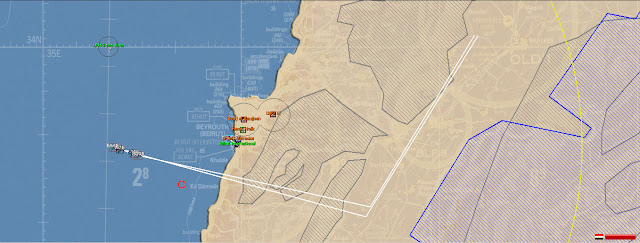This series of blog entries are about the so-called "maneuver warfare" as explained by William Lind. The writings of Robert Leonhard will also be included. I claim neither expertise in the subject nor devotion to this way of waging wars and thus I am not trying to convert you into anything. This series is not an analysis or a review of all ideas about maneuver warfare but rather some explorations about the topic based on computer war games and simulations. Future entries will be delivered based in readership.
This entry is related to the previous one. Today, a German SOF team reveals the hidden truth behind a seemingly inviting gap.
War is all about things not being what they actually look like. The wise warrior will use every ounce of imagination to trick his enemies into believing he is stronger or weaker than he actually is. In the previous entry, we found out about surfaces and gaps and how you as a commander should avoid the enemy strong points and pull through his weak spots. We should keep in mind that in the battlefield very few things stay the same over time or are actually what they look like. That's why once we detect an enemy's weak spot we should act fast but keep our eyes open to avoid any surprises.
Today's mission: a German KSK special forces squad is returning from a successful snatch and grab at a urban area and now is attempting an exfiltration towards a linkup point eastward from their position. The squad featured in this mission is part of a platoon and the exfiltration is being conducted by squads. The enemy (insurgents) is slowly coming to grips about the raid and is setting up blocking positions wherever they can.
The German squad will attempt to move at or near streets to keep speed at a reasonable level.
 |
| Peeking east through "right street" reveals an enemy patrol reinforced with an APC. "Right Street" is a surface. |
 |
| Looking east down "left street". At least two enemy patrols in the distance with maybe a technical truck. "Left Street" is another surface. |
 |
| SITREP. Left and right streets are definitively surfaces. The question is: is the "center street" actually a gap? |
With the support team holding a house on the side of the center street, I carefully move east with my scout (#4).
 |
| Contact on the right flank. A heavy machine gun. I quickly dispatch it from my position without incident. Damn I love my rifle! |
 |
| Need a moment to think. I am watching towards my guys now (note the support team in the house across the "center street", green icons). We have no AT weapons, how are we going to take out this APC? |
I have no options but to try to snipe the APC gunner. Since the APC has no overhead armor, I may have a chance. I don't know how on earth I killed the heavy machine gunner before without throwing the enemy onto us, but this time I may not be that lucky and I want to have the whole squad ready to move out east once I take out the APC gunner.
 |
| I come back to my support team and organize them on the sides of the "center street". |
 |
| In situations like this, I hate being such a lousy shot. I got the APC gunner, though, and the vehicle moved away really fast. I was lucky that this vehicle was unsupported by infantry. |
It is time now to move the squad east and this is where I am going to stop the narrative and get back to the original point.
 |
| It all started with a clear tactical picture of "left" and "right" street as being surfaces. "Center" street, originally thought as a gap, ended up being a kill sack. |
Take home lesson:the physical absence of enemy in a piece of terrain doesn't guarantee a gap and any piece of terrain where the enemy has a field of fire is actually a surface.
Cheers,












































